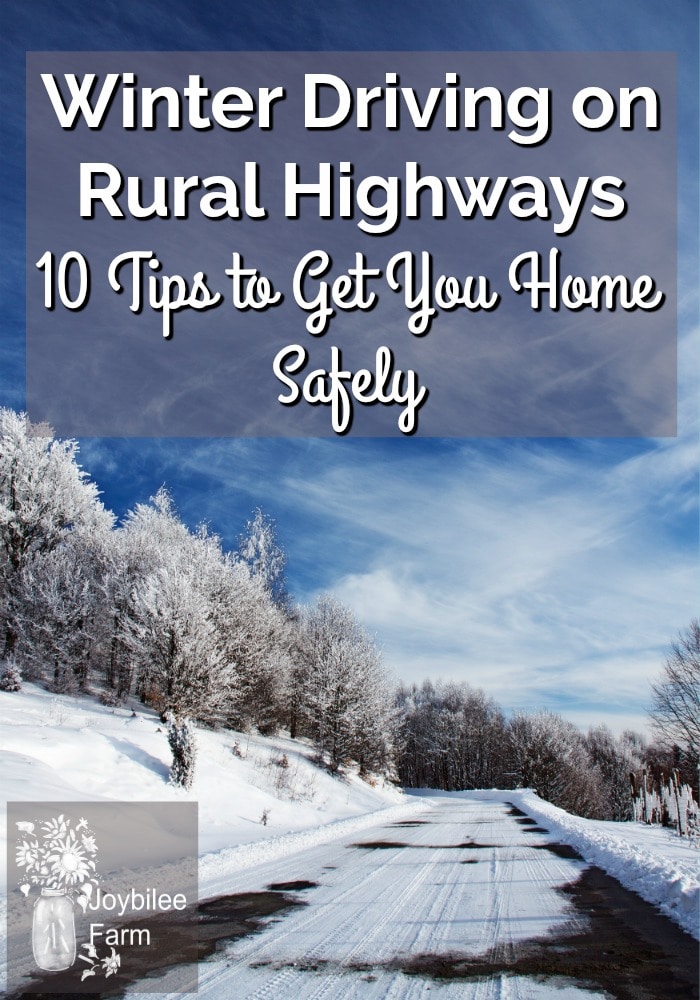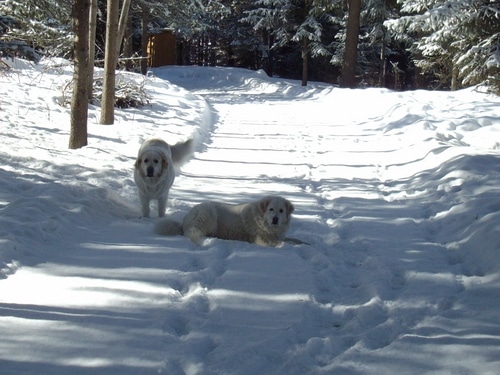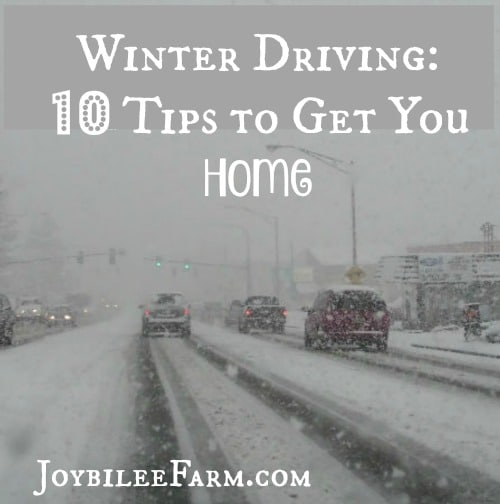Winter driving on rural highways – 10 tips to get you home safely.
Even with snow tires and chains, the driving conditions can be treacherous. Risky weather can blow in when you least expect it, making getting home dangerous. Here are 10 tips to keep you safe in winter driving conditions.

It’s official. After November 1st winter driving conditions are in effect on all Canadian roads. There are signs on the highway that warn drivers not to go beyond the city limits without snow tires and chains. Even with snow tires and chains, the driving conditions can be treacherous. Risky weather can blow in when you least expect it, making getting home dangerous.
Here are 10 tips to keep you safe in winter driving conditions.
1. Know the road conditions. If it’s not safe don’t go.
Plan your route. Check road safety conditions along the way. If you are in B.C. check Drive BC for up to the minute road conditions. If you live somewhere else, find the official driving condition web portal for your province or state, and connect.
2. Know the expected weather conditions and be prepared for them.
In BC check out the government weather report here. Or check Accuweather for your area.
Be aware of impending weather warnings so that you aren’t taken by surprise. Carry chains if snow is expected and you’ll be travelling in hills or mountains.
Dress for the expected conditions. Have coats, mitts, hats, and insulated boots if you will be travelling in snowy conditions. Even if you don’t need them in the car, you may need them if you break down.
3. Fill your fuel tank and keep it over half-filled during the trip.
It could save your life. Don’t let your fuel take hover around empty. We have a rule, after November 1st. If you use the car you fill the tank. It means more trips to the gas station, but we always have enough gas to get home.

4. Prepare your vehicle for winter driving conditions.
- Install snow tires on your vehicle, not all-season radials. Snow tires give extra traction in ice and snow.
- Make sure your spare tire is also a snow tire.
- Chains can make travel safer, and are mandatory on some roads in winter.
- Upgrade your coolant levels.
- Use windshield cleaner rated for winter conditions.
- Check your battery levels. And replace your battery now if it is unreliable in cold weather. Cold weather driving puts more strain on your battery and your battery can quit without warning.
- Carry a bag of sand or cat litter in the back of your vehicle, both for weight and traction, and a snow shovel.
- If you will be travelling in winter conditions as a matter of habit, choose a vehicle with front-wheel drive, all-wheel drive, or 4 wheel drive. Rear-wheel drive vehicles are more difficult to handle in icy conditions.
- Automatic transmissions on trucks with a high center of gravity can cause the vehicle to spin out of control on mountain roads when the automatic transition changes gear on an uphill corner. Be prepared and gear down, before the shift, when you are travelling on icy roads. It could prevent you from flipping the vehicle.
5. Carry a winter emergency survival kit in case you get stranded.
- First aid kit
- Flares
- Blankets or sleeping bag
- Large Garbage bags that could double as a tarp or rain poncho
- High energy food like dry granola bars, dry fruit, noodles. (food that won’t be damaged in temperature extremes)
- A portable stove, like the Kelly Kettle or a candle stove.
- Matches or a lighter (non-smokers will need to plan for this)
- Candles (use for light and to keep the vehicle warm)
- A can for melting snow in for water
- Coats, wool socks, mitts, scarves and other winter clothing (you wouldn’t believe how many times my family gets into the car in winter and leaves the coat in the house. Don’t do it.)
6. Prepare for driving in winter road conditions,
Especially if you have a new driver in the house, as we do. By training ahead of time, emergency response behind the wheel will be confident and safe.
- Practice steering out of a skid, in a safe, empty parking lot.
- Pump the brakes gently and gear down to slow down.
- Go slow. In winter driving conditions — drive slower than the posted speeds.
- Give more space between you and the driver in front.
- Watch for wildlife and slow down before you hit the brakes.
7. In poor driving conditions, stick to the main roads and allow extra time for the trip.
- The main roads are more likely to be plowed and salted. If you do get stranded, another vehicle should be by within a short time.
- Stay away from logging roads and little-used treks. If you do get stranded it could be months before you get help.

8. Generally, when driving in wintry weather:
- Drive according to the conditions – on treated and untreated roads.
- Reduce speed in poor visibility, where there is snow, or if ice may have formed.
- Use the highest gear possible to help keep control of the vehicle and avoid harsh braking and acceleration.
- Maintain larger safer stopping distances – two seconds between vehicles is for good conditions! A wet road surface means you’ll take twice as long to stop, so you need to be at least four seconds behind the vehicle in front.
- Use dimmed headlights in poor visibility and snow, so others can see you!
- Use rear fog lights in poor visibility but remember to switch them off when conditions improve.
- Watch out for other road users, including motorbikes, pushbikes, pedestrians and children, who may also be having difficulties in the conditions. (Drive Smart BC)
9. If you get stranded:
- Stay with your vehicle.
- Set flares at night.
- Move your car off of the main highway for safety.
- Have a sleeping bag or blanket.
- Have high-energy food.
- Carry a can for melting snow.
- Carry emergency candles and matches.
- Keep a window slightly open for fresh air, if you are burning a candle or running your vehicle.

10. Use the trick that truckers use up North in slippery conditions.
Carry a sealed bottle of chlorine bleach in your vehicle. If you encounter icy conditions, pour a bit of bleach on your tires. It softens the rubber allowing it to grip better. It gives more traction and can take the slickness away and get you to safety.




Great tips!! Safety is so important!
Thanks for your comment and for pointing out the link to drivebc.ca. I’ve added it.
Cheers,
Chris
Thanks very much for linking to DriveSmartBC on this page! My site is a good reference for road safety and traffic law, but for road conditions you want DriveBC which can be found at http://www.drivebc.ca
Awesome article, thank you!
One more, and I’m big on this, take a first aid/cpr course and keep updated. There is not hing so horrible as being in an emergency and not having any idea what to do.
I also keep an old cell phone charged and ready in the emergency kit. It’s no longer connected but even without a service plan any cell phone can be used to call 911 :).